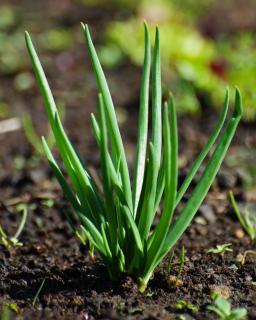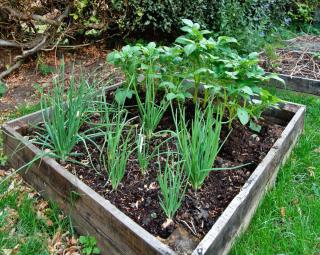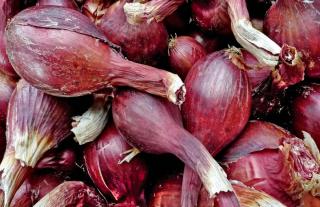

Shallot is both easy to grow and delicious in cooking.
Summary of Shallot facts
Name – Allium ascalonicum
Family – Alliaceae
Type – vegetable
Height – 6 to 10 inches (15 to 25 cm)
Exposure – full sun
Soil: light, drained – Flowering: summer – Harvest: July and August
Caring for shallot from planting to harvest won’t burden you in any way while guaranteeing you excellent results.
Shallot is a perennial, but in cooler climates it is grown as an annual.
There, it disappears in winter and will only rarely reappear the following year.
Shallot is should be planted during waning moon for best results.

If you expect heavy rain and high residual soil moisture, wait for the end of winter, even until March and April to plant your bulbs.
Not so common but also perfectly possible, you may sow your shallot from seed.
Upon harvesting, in July, pull out the bunches and dry them in the sun in a breezy place for two to three days. Using a grelinette makes the job really easy.
Take note that gray shallots, although the most common variety, only keep until mid-December.
If you hope to keep your shallots all winter long, prefer Jersey shallots which have a pinkish hue and taste just as good.

A spice vegetable, it complements dishes and sauces that strive to make it into the “fine dining” category, both raw and cooked.
Shallot has rather high vitamin C and B levels, as well as trace elements and antioxidants. It is among the alliums that support treatments against cancer and other imbalances of the human body.

Shallot has very high magnesium content, grow it and boost your health status!